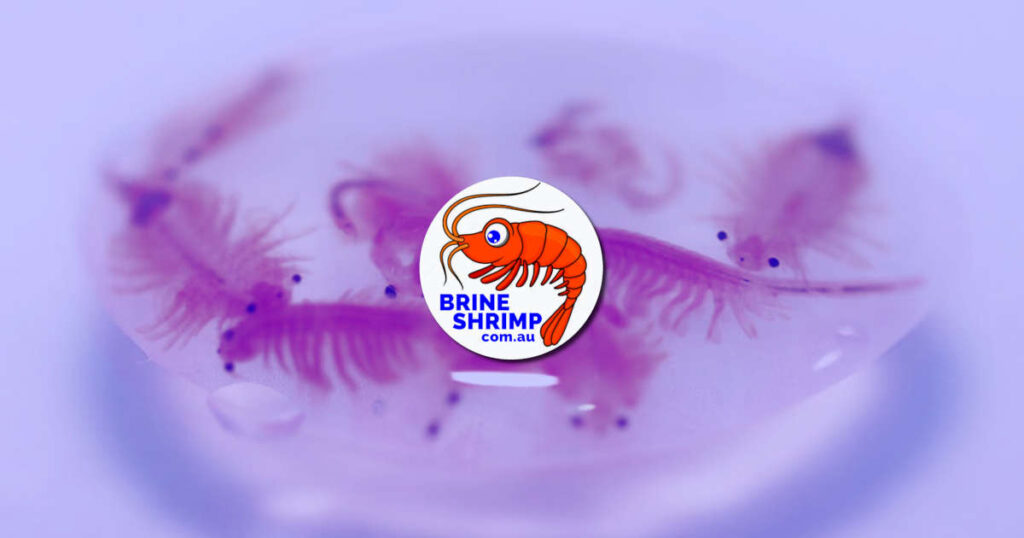Best Brine Shrimp Eggs Australia
Best Brine Shrimp Australia Feeding baby brine shrimp to fish fry is a common and nutritious option. Here’s a step-by-step guide on how to do it:
- Obtain brine shrimp eggs: Purchase Best Brine Shrimp Eggs Australia from a reputable source, like Australia’s original source of Brine Shrimp eggs, Brineshimp.com.au. Our eggs are guaranteed fresh and good quality and have a high 95% guaranteed hatch rate.
- Hatch the brine shrimp: To hatch Best Brine Shrimp Eggs Australia, you’ll need a hatching setup. Use a small container, like an inverted 1.25litre plastic soft drink bottle. Fill it with dechlorinated water, preferably at a salinity of 4 teaspoons of non iodised salt per litre. Add the best brine shrimp eggs Australia at a rate of 1g or the size of your pinky fingernail approx.
- Aerate and light the hatching container: Place an air stone in through the a hole in the bottle top to provide aeration. This helps keep the water oxygenated and moving prevents the brine shrimp from settling at the bottom. Also, provide a light source, such as a desk lamp or a dedicated aquarium light, to attract the shrimp towards it.
- Maintain temperature and water quality: Brine shrimp hatch best at a temperature between 23-27°C. Monitor the temperature using a thermometer and aim to keep it within this range. Additionally, maintain good water quality by ensuring the water is clean and free from contaminants.
- Wait for hatching: Best brine shrimp eggs Australia typically hatch within 24-48 hours. During this time, the eggs will transform into nauplii, which are tiny brine shrimp larvae. They will be visible as small vibrating specks swimming in the water.
- Harvest the brine shrimp: Once the brine shrimp nauplii have hatched, you can begin feeding them to your fish fry. Use a fine mesh net or a best brine shrimp eggs Australia sieve to separate the nauplii from the hatching container. Rinse them gently with fresh water to remove any salt residue.
- Feed the fish fry: Place the harvested brine shrimp nauplii into the aquarium or tank with the fish fry. The nauplii will be small enough to be readily consumed by the fry. Feed them multiple times a day, adjusting the amount based on the fish fry’s appetite. Be mindful not to overfeed, as excess food can lead to poor water quality.
Remember to always observe your fish fry while feeding and adjust the quantity of brine shrimp nauplii accordingly. As the fish grow, you may need to introduce larger food options to accommodate their size and nutritional needs.

What Are Brine Shrimp?
Cheap brine shrimp eggs are crustaceans that are classified in the phylum Arthropoda (the largest phylum in the animal kingdom, which includes insects and other creatures with jointed legs and exoskeletons).
- They live in inland bodies of saltwater, such as Lake Eyre, but not in the ocean, where they would have too many predators.
- The female brine shrimp lays encapsulated eggs, or cysts, which remain dormant until the right hatching conditions. These cheap brine shrimp eggs can survive for years when dried and then, when added to salt water, hatch literally overnight!
- The hatched shrimp larvae are called nauplii (singular is ‘nauplius’) and have a different anatomical structure than adult brine shrimp. A nauplius has only one eye, called a nauplier eye and has an extra pair of antennae with hairlike setae for swimming.
- The nauplii molt, or shed their exoskeleton, about 12 hours after hatching. This brings them into the second larval stage. After several more moultings, they reach the adult stage; it only takes about eight days to mature from the time they hatch.
- Adult brine shrimp have a pair of compound eyes as well as the nauplier eye. They also have 11 pairs of pleopods or leg-like appendages. The structure of the pleopods are designed for different functions: some are for swimming and the others are for scraping and filtering algae (the shrimp’s primary food source).
Mature brine shrimp might grow to as much as 12mm and live for up to three months.
Use a pipet or medicine dropper to ‘catch’ some of the shrimp and transfer them with sufficient water into a petri dish for easy observation. To view the sea monkeys under microscope look at them closely with low power (10-30x) magnification.
Overall, the small size, high protein content, balanced nutritional profile, and enrichment potential make cheap brine shrimp eggs an excellent and nutritious food source for fish fry. They provide the essential nutrients required for growth, development, and overall health, promoting optimal conditions for the young fish to thrive.
Watch us on Youtube
Best Brine Shrimp Eggs Australia
Frequently Asked Questions
Do brine shrimp eggs need aeration?
Aeration: Constant aeration is recommended to keep the brine shrimp eggs in suspension and to provide sufficient oxygen levels for the eggs to hatch. Most guides advise 3 parts per million dissolved oxygen during incubation. Don't be overly concerned, the eggs are robust and strong aeration won't damage them or the newly hatched baby brine shrimp (bbs).
How long can brine shrimp eggs stay dormant out of water?
Brine shrimp eggs are actually cysts and can stay dormant, if kept dry and out of water, for years.
Is decapsulated brine shrimp better?
It depends. Some researchers have found that there are improved hatching rates by as much as 10% when using decapsulated cysts. This is because less energy is required for the emerging embryo to "burst" through the hatching membrane.
What do brine shrimp need to thrive?
Optimal salinity within the specific gravity range of 1.024 - 1.028 or 35 to 40 ppt. This can be measured with a hydrometer. The optimal temperature of the water is about room temperature range - between 20C to 25C.
Wholesale to the Public

We pass on our bulk buy discounts so you save on the freshest brine shrimp eggs Australia has to offer.

